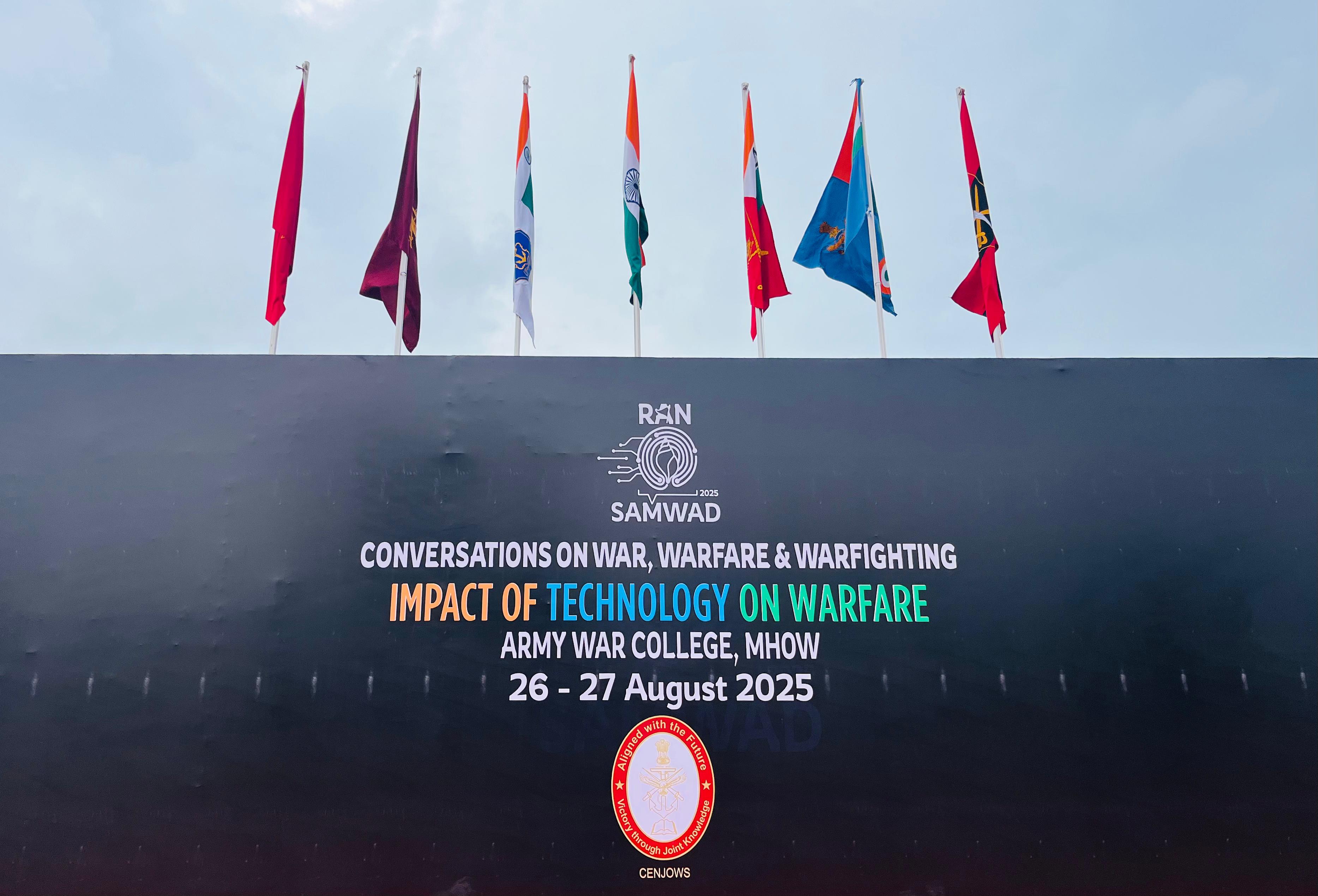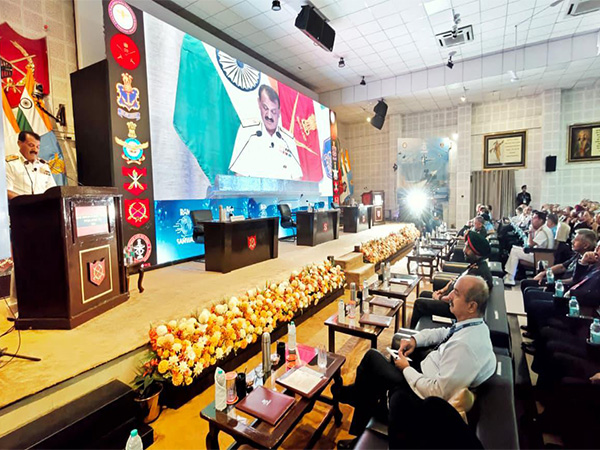Dr Ambedkar Nagar (Madhya Pradesh) [India], August 27 (ANI): Senior officers of the Indian Armed Forces on Wednesday outlined a roadmap for integrating disruptive technologies, overhauling training and strengthening joint operations on the concluding day of Ran Samwad-2025, presenting a unified vision of a future-ready military.
Admiral Dinesh Kumar Tripathi, Chief of the Naval Staff, emphasised that India’s maritime security will increasingly depend on the integration of disruptive technologies, space, cyber and AI-driven platforms with traditional naval power.
He underscored the importance of self-reliant shipbuilding, low-cost, efficient technologies, and multi-domain deterrence.
While affirming the Navy’s aim to be fully future-ready by 2047 through partnerships with academia, industry, start-ups and MSMEs. Admiral Tripathi also highlighted initiatives to rescale and upskill personnel, create pools of domain experts, and strengthen synergy with the Indian Army and Indian Air Force.
Lt Gen N. S. Sarna, Commandant of the Army War College, echoed the call for transformation, stressing that training systems must adapt rapidly to disruptive technologies. He urged a doctrinal shift in basic military training to incorporate drones, cybersecurity, electronic warfare, and information operations. 
Brigadier Revety Bhandari from Army Training Command outlined the roadmap for integrating unmanned and autonomous systems into land warfare. He spoke on human-machine teaming, AI systems management and global benchmarks in drones and UGVs, while addressing legal and ethical dimensions.
He proposed a phased restructuring of force structures from semi-autonomous to fully autonomous systems by 2035, alongside training cadres for maintenance and developing robust AI-enabled systems.
Highlighting the lessons from contemporary conflicts, Gp Capt Vipul Mishra of the Indian Air Force stressed the need for realistic combat training and integrated training areas.
He emphasised AI-enabled threat emulation, multi-domain drills, and joint operational training to strengthen India’s layered air defence capability.
He noted that early phases of military missions will require long-range systems, but focus will gradually shift to medium- and short-range weapons to ensure balanced and flexible operations.
Capt (IN) Sairam Chiruvela addressed the challenges of space-based surveillance and SATCOM, urging investment in resilient C4ISR frameworks and protection of satellite communications from cyber threats.
He proposed an edge-centric fusion architecture supported by laser-linked satellite networks to ensure robust situational awareness in contested environments.
Speaking on “Disrupting the Adversary’s Logistic Backbone in the Digital Age,” Maj Gen Amit Talwar underlined the importance of predictive AI logistics, autonomous resupply platforms and cyber-secure networks.
Lt. Gen. Rakesh Kapoor, Deputy Chief of Army Staff (Information Systems & Technology), focused on aligning training with technological demands within the theatre command construct.
Giving his closing remarks, Chief of Defence Staff General Anil Chauhan informed that, “the next Ran Samwad will be organised tentatively in May 2026 in Agra. The subject of the next Ran Samwad will be “Multi-domain operations”. (ANI)
Disclaimer: This story is auto-generated from a syndicated feed of ANI; only the image & headline may have been reworked by News Services Division of World News Network Inc Ltd and Palghar News and Pune News and World News
HINDI, MARATHI, GUJARATI, TAMIL, TELUGU, BENGALI, KANNADA, ORIYA, PUNJABI, URDU, MALAYALAM
For more details and packages




















